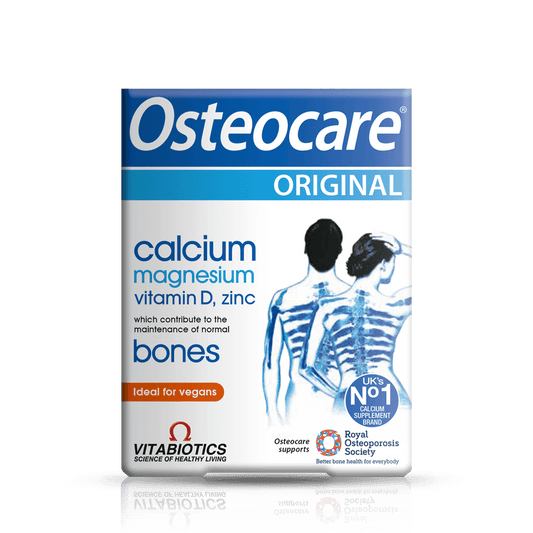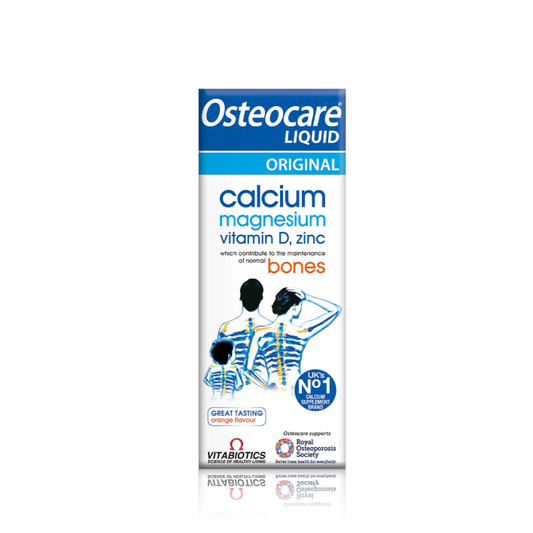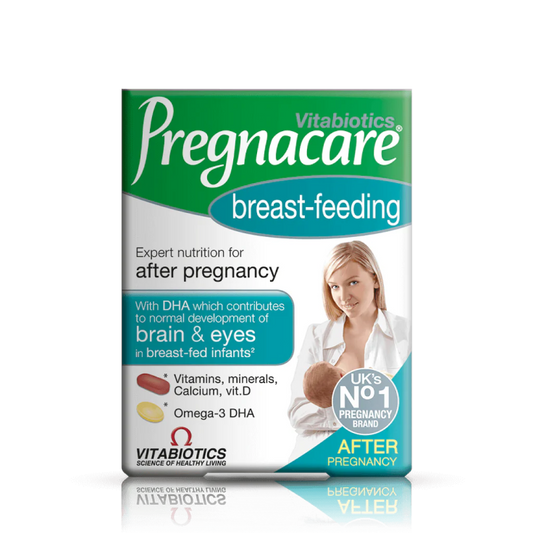Calcium is one of the most important minerals in our bodies, playing a fundamental role in maintaining health and well-being. Although it is commonly associated with healthy bones and teeth, its importance goes far beyond these structural functions. This article aims to provide a comprehensive overview of calcium as a dietary supplement, discussing its key roles in the body, the effects of deficiency, groups of people who are particularly at risk for deficiency, available supplement forms, recommended doses, potential health benefits, risks of overconsumption, and natural sources in the diet.
The key role of calcium in the body
Calcium is an element that is found in the vast majority, as much as 99%, in bones and teeth . This impressive concentration emphasizes its fundamental importance in the formation and maintenance of a strong skeletal structure and healthy teeth. Adequate calcium intake is key to preventing bone weakness and susceptibility to fractures . The fact that such a large part of calcium in the body plays a structural role does not, however, diminish the importance of the remaining 1%, which is necessary for the proper course of many other physiological processes. This distribution suggests that the body strives to maintain an adequate level of calcium for key vital functions, sometimes at the expense of bone health in the case of long-term deficiency.
Calcium plays an essential role in nerve conduction , enabling communication between nerve cells. It is essential for transmitting nerve impulses, which underlies functions such as movement, sensation, and thought. Calcium's action as a signaling molecule in the nervous system is fundamental to almost all body functions. This broad spectrum of action indicates that even minor disturbances in calcium levels can have wide-ranging consequences.
Proper muscle function, including muscle contraction and relaxation, also depends on the presence of calcium . Calcium is involved in the contraction of skeletal, smooth, and cardiac muscles. Its role in muscle contractility, including cardiac muscle, highlights its importance for cardiovascular health and overall physical activity. Deficiencies can lead to muscle weakness and cramps.
Blood clotting is another key process where calcium plays a vital role. It is essential for forming clots and stopping bleeding after blood vessel damage. Calcium’s role in hemostasis is crucial for survival , and its deficiency can lead to bleeding disorders, underscoring its importance beyond bone health.
In addition to the functions mentioned, calcium is involved in:
- Regulation of many enzymes and hormones
- Energy metabolism, blood pressure regulation and heart function
- Maintaining ionic and pH balance
- Cellular metabolism, including growth, reproduction, and hormone secretion
- Regulation of inflammatory processes
Such a broad spectrum of action indicates the fundamental role of calcium in maintaining homeostasis and proper functioning of the entire organism.
Calcium deficiency (hypocalcaemia) - symptoms and effects
Low blood calcium levels, called hypocalcaemia, can cause a variety of symptoms, especially in the neuromuscular system. Early symptoms may include:
- Muscle spasms, especially in the hands, feet and face
- Tingling and numbness in the hands and feet
- Muscle weakness and fatigue
- Body tremors or shaking
- Irritability and anxiety
- Sleep disorders
- Dizziness
- Difficulty speaking or swallowing
- Memory and learning problems
These early symptoms reflect the crucial role of calcium in nerve and muscle function , suggesting that they may be early signals of a developing deficiency and should not be ignored.
Long-term calcium deficiency can lead to more serious health consequences of a systemic nature. Late and serious effects of deficiency include:
- Osteoporosis and increased risk of bone fractures
- Dental problems such as weakness, cavities and gum irritation
- Blood clotting disorders
- Heart rhythm abnormalities
- Skin problems such as eczema, dry skin and psoriasis
- Hair loss and brittle nails
- Cataract
- Depression and other mood disorders
- Seizures
- Heart failure and tetany, characterized by severe muscle spasms
In children, long-term calcium deficiency can lead to growth disorders, bone deformities, and delayed teething and walking . These serious and systemic consequences underscore the long-term importance of adequate calcium intake.
Who is at risk of calcium deficiency and is supplementation for you?
Specific groups of people are more at risk for calcium deficiency and may want to consider supplementation, after consulting a doctor, of course. Older people are at increased risk due to reduced ability to absorb calcium, often due to lower levels of vitamin D, reduced stomach acidity, and general physiological changes associated with age. This makes them more susceptible to osteoporosis and fractures. They also often experience increased neuromuscular excitability, muscle spasms, and balance problems.
Pregnant and breastfeeding women have an increased need for calcium due to the needs of the developing fetus and milk production . Nursing mothers may experience increased calcium loss after pregnancy due to falling estrogen levels. Studies indicate that many women in Poland do not consume enough calcium, so supplementation may be considered to ensure the health of both mother and child.
Vegans may have lower calcium intake than those on a traditional diet if their diet is not carefully planned . Although calcium is found in many plant foods, especially fortified ones and some vegetables, nuts, and seeds , vitamin D supplementation is especially important for vegans to aid in calcium absorption.
People with certain health conditions may also be at greater risk for calcium deficiency. These include people with:
- Chronic kidney disease
- Osteoporosis
- Acute pancreatitis
- Parathyroid disorders
- Malabsorption syndromes (e.g. celiac disease, Crohn's disease, short bowel syndrome)
- Some genetic conditions, such as DiGeorge syndrome
- People on high protein or high sodium diets
- People with broken bones
In these cases, monitoring calcium levels and possible supplementation under medical supervision are particularly important.
Types of Calcium Supplements - Calcium Carbonate vs. Calcium Citrate and Others
There are various forms of calcium supplements available on the market, differing in their elemental calcium content, absorption, and potential side effects . The most popular are calcium carbonate and calcium citrate:
- Calcium carbonate - has the highest elemental calcium content, around 40%. This is usually the cheapest supplement option. However, its absorption is highly dependent on stomach acid and is best when the supplement is taken with a meal. In some people, it can cause bloating and constipation. In the stomach, calcium carbonate reacts with hydrochloric acid, transforming into easily digestible calcium chloride. It is used to treat osteoporosis, supplement calcium deficiency, and as an antacid.
- Calcium citrate - contains a smaller amount of elemental calcium, about 21%, and is usually more expensive than calcium carbonate. Its absorption is less dependent on stomach acid and it can be taken with or without food. It is generally better tolerated and less likely to cause gastrointestinal discomfort. Calcium citrate may be preferred in people with low stomach acidity, the elderly, and those taking medications that reduce stomach acid secretion. The better bioavailability of calcium citrate, especially in people with reduced stomach acid production, means that it is used more efficiently by the body.
Other forms of calcium available include calcium lactate (containing about 13% elemental calcium) and calcium gluconate (about 9%). There is also calcium phosphate, which contains about 40% elemental calcium and is less likely to cause constipation than calcium carbonate, but is more expensive. Choosing the right form of calcium supplement depends on your individual needs, tolerance, and any health concerns .
What are the recommended daily doses of calcium?
Calcium requirements vary with age and physiological condition. The following table provides general recommendations for daily calcium intake:
|
Group |
Age |
Recommended Intake |
|
Infants |
0-0.5 years (year) |
200-260 mg |
|
Children |
1-3 years |
700mg |
|
4-9 years |
1000mg |
|
|
Boys |
10-18 years |
1300mg |
|
Girls |
10-18 years |
1300mg |
|
Men |
19-50 years |
1000-1200 mg |
|
51-70 years |
1000mg |
|
|
> 70 years |
1200mg |
|
|
Women |
19-50 years |
1000-1200 mg |
|
51-70 years |
1200mg |
|
|
> 70 years |
1200mg |
|
|
Pregnant women |
14-18 years |
1300mg |
|
19-30 years |
1000mg |
|
|
Breastfeeding women |
14-18 years |
1300mg |
|
19-30 years |
1000mg |
It is important to remember that these are general guidelines and individual needs may vary. Calcium absorption is usually better when taken in smaller doses (≤ 500 mg) with meals. Different recommended doses by life stage reflect the body's changing calcium needs. Dietary and supplementation strategies should be tailored to individual needs, taking into account age and health status.
Potential Health Benefits of Calcium Supplementation
Calcium supplementation is commonly used to:
- Strengthening bones and preventing osteoporosis
- Reduced bone loss - especially in postmenopausal women and older adults, and reduced risk of fractures. This benefit is most documented and important for populations at risk for bone weakness.
- Blood pressure regulation
- Reducing the risk of colon cancer
- Supports weight management
- Alleviating allergy symptoms
- Improved sleep quality
- Maintaining healthy teeth
- Relieving muscle spasms
While these additional benefits are promising, they often require further research to fully confirm their effectiveness.
This may be useful to you: Osteocare - calcium supplements tailored to your needs
Risks of Excessive Calcium Consumption and Possible Interactions
Excessive calcium intake can lead to hypercalcemia , which is too high a level of calcium in the blood, which can cause a variety of undesirable symptoms. Common symptoms include constipation, nausea, vomiting, abdominal pain and loss of appetite, increased thirst and frequent urination , and the formation of kidney stones . Weakness, fatigue, and muscle pain may also occur, as well as irregular heartbeat (arrhythmia) , and paradoxically, excessive intake can sometimes weaken the bones. In serious cases, neurological symptoms may appear, such as confusion, memory loss, irritability, depression, and even coma. In addition, excess calcium can impair the absorption of iron and zinc . It is important to follow the recommended doses to avoid these negative effects.
Calcium can also interact with some medications and other dietary supplements. It can interfere with the absorption of some antibiotics (tetracyclines and quinolones) and reduce the effectiveness of bisphosphonates used to treat osteoporosis . Calcium can also reduce the absorption of iron and zinc, and interact with some heart medications (calcium channel blockers). Calcium supplements should be taken 2-4 hours apart from levothyroxine (a thyroid medication). It can also reduce the absorption of magnesium. Some medications, such as diuretics, antacids, and corticosteroids, can affect calcium levels in the body. Vitamin D, vitamin A, and boron can increase calcium absorption . Due to potential interactions, consulting a doctor before starting a calcium supplement, especially if you are taking other medications, is highly recommended.
See also: Why do our legs hurt? The importance of supplementation
Natural sources of calcium in your diet
Calcium can be found in many natural food sources, often allowing you to meet your daily requirements without the need for supplementation. Dairy products, such as milk, yogurt, and cheese (especially hard cheeses), are excellent sources of calcium. The lactose in milk aids in the absorption of calcium.
Other rich sources of calcium include green leafy vegetables (broccoli, kale, spinach), fish with edible bones (sardines, canned salmon), nuts and seeds (almonds, sesame seeds, chia seeds, poppy seeds), legumes (beans, lentils, tofu, especially calcium-fortified), fortified foods (plant-based milk alternatives, juices, breakfast cereals), dried figs, and oranges.
The table below shows sample products and calcium content in 100g of product:
|
Product |
Calcium content per 100g (mg) |
|
Almonds |
239 |
|
Dried figs |
203 |
|
Flax seeds (Linseeds) |
195 |
|
Natural yogurt 2% |
170 |
|
Yellow cheese |
700-1000 (variable) |
|
Sardines in oil |
330 |
|
Poppy seeds |
1266 |
|
Kale |
~250 |
|
Broccoli |
~47 |
A varied diet rich in these foods is often sufficient to provide adequate amounts of calcium.
Summary and Tips for Calcium Supplementation
Calcium is an essential mineral that plays a key role in many aspects of our health, from building strong bones and teeth to keeping our nerves, muscles and circulatory system functioning properly. Recognizing the symptoms of calcium deficiency and being aware of risk groups are important for maintaining optimal health. Calcium supplementation may be necessary for some people, but should always be discussed with a doctor.
Here are some general tips for calcium supplementation:
- Calcium supplements are best taken in divided doses (no more than 500 mg at a time) to increase absorption.
- Calcium carbonate is best absorbed with a meal, whereas calcium citrate can be taken regardless of meals.
- It is important to ensure an adequate supply of vitamin D, which is necessary for the absorption of calcium.
- Be aware of potential interactions of calcium with other medications and supplements.
- Do not exceed recommended daily doses to avoid negative health effects.
It is worth remembering that the best way to ensure an adequate amount of calcium is a balanced diet rich in natural sources of this element. In case of doubts regarding calcium needs and possible supplementation, it is always recommended to consult a doctor or dietitian.










